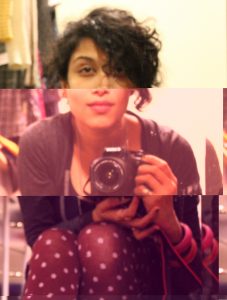by Rahima Rahi
Magic happens when you just leave the camera rolling after an interview. In my work at the after-school program at the Graham Windham Manhattanville Cornerstone Community Center, I have also learned that magic happens when you turn the mic toward the people that are often not listened to. I would like to share a quick snippet from a sweet interview with a Graham Windham staff that made me reflect on that more. Mr. Whatley, Assistant director of the Graham Windham Cornerstone, talked about growing up in an open-door policy home and how he brought that to the after-school program:
I think, as parents, educators, mentors it is important for us to reassess those boundaries and reflect on whether those boundaries are even necessary? How are these boundaries affecting how children learn to tell their stories? What needs to shift in that practice as the world around us changes?
The stories children tell, and how they tell them, are deeply affected by those experiences. The muscle memory of when they were told to stop, what they were allowed to talk about and what they weren’t influences how they share their stories. Another big factor that affects how openly students are willing to share their stories is trust. As I am in the process of building relationship of trust with these children and youth, I am listening and learning from the stories of the staff at the Cornerstone whom some of these kids trust more than anyone else in their life. I would like to share one particular story that really stood out to me. Mr. Hollie – Community Coordinator at the Graham Windham Cornerstone shared his story about being the first as a lifeline for the kids:
Historically, we have kept children and youth away from political discussion and I am sure we had good reasons to do so. In this time of Emma González and many more youth who are speaking out and doing the social impact work adults should’ve done centuries ago, how do we maintain the censoring policy with kids? Or should we? Let’s think about it for a moment, children are affected by the current political situation even more than adults in some ways, but when they are not allowed to talk about it the same way adults are how is that affecting them, how is that affecting how they will tell their stories five years from now?
Last week, when I asked some the middle school students about the National School Walkout and their experiences at the march, one of them said “oh you know they say we have power but we don’t feel it.” She said she felt empowered when she marched and chanted; she felt, she had an authority. As a documentarian I want to continue thinking about these words. How do we create safe spaces for children and youth to share their stories as openly as they want to? How can we embody a tone that is not trying to censor and limit their thoughts, and makes them feel they have agency? How can these children use art as a tool for resistance? How can they use storytelling as medium for healing for themselves, their communities, and their ancestors?
In addition to this work, I am currently working on a 5-minute piece that will highlight the programs and services offered at the Graham Windham Cornerstone. While producing this 5-minute video, I have asked several staff members why they work there. Almost all of them had the same answer: “I do it for the kids.” This is not just a job for them, they come to the center because every part of their daily work is rewarding in some ways. During the interviews the staff shared some of those rewarding moments and why this work is special for them. I feel inspired to create a series of video portraits on individual staff members. I think their stories can be an extension to the 5-minute video that will take viewers on a journey to the heart of the community support that’s provided at the Graham Windham Cornerstone.
Through all of these shorter projects, I have been engaging with the larger community in a deeper way than I had expected. This deep and meaningful relationship with the community is helping me gain their trust to pursue my final project with them. I am interested in creating an intergenerational creative think tank with the seniors and middle school students who participate in programming at the center. Their responses to particular questions will be curated and presented visually in form of a split-screen digital mural. Some parts of this project will encourage the seniors and children to share the same space to engage in various creative fun activities as they explore specific philosophical and political ideas. This work allows me to continue looking for magic by turning the mic toward the people who are often not listened to, or at least perhaps not in the way they would like to be.

